Which digital experience architecture is right for your business?
Which digital experience architecture is right for your business?
- Monolithic, which refers to single-vendor-based architectures, whereby the vendor is often a closed system with a single product that contains many specific components, that are glued together so that they are inseparable. Monoliths frequently dictate certain paradigms for coding the front end.
- Headless, which applies to decoupled architectures, where presentation (the head) is separate from the underlying (headless) business logic technologies.
- MACH, which stands for Microservices, APIs, Cloud, and Headless. Notably, products built the MACH way can meet brand requirements for performance, scalability, flexibility, etc. However, despite the vendors’ headless capabilities, not all vendors are MACH certified.
- Composable, which means that your digital-experience stack comprises various packaged business capabilities (PBCs), each of which featuring one or more technologies and which you can add or replace without fundamentally changing the architecture. In a composable architecture, all the systems are decoupled. The more decoupled they are, the more flexibility for switching functionality or updating designs.
- How composable a technology is refers to how pluggable or swappable its elements are and who can plug or swap them.
- How MACH ready a technology is refers to how oriented it is vis-à-vis APIs and microservices and how mature it is in terms of MACH standards.

- Legacy monolith: low composability and low MACH maturity
- Suite technologies: high composability and low MACH maturity
- Composed MACH monolith: low composability and high MACH maturity
- Composable MACH: high composability and high MACH maturity
Legacy monolith
Typical customers
Pros
Cons
- Inflexibility, involving extra costs when acquiring capabilities not offered by the vendor or when the capabilities offered cannot meet your requirements.
- Vendor lock-in, i.e., a platform-based stack that often needs replatforming for modernization every four to five years.
- Limited access to resources for implementing solutions based on the vendor’s proprietary technology.
Suite technologies
Typical customers
Pros
- A one-vendor contract, i.e., you buy the capabilities for your stack from a single vendor.
- A preintegrated system with adjacent capabilities.
- A broad ecosystem of system integrators.
Cons
- Inflexibility, involving extra costs when acquiring capabilities not offered by the vendor or when the capabilities offered cannot meet your requirements.
- Vendor lock-in, i.e., a platform-based stack that often needs replatforming for modernization every four to five years.
- Limited access to resources for implementing solutions based on the vendor’s proprietary technology.
Composed MACH monolith
Typical customers
Pros
- Learning how to use the composed MACH monolith is easy and fast given the small number of systems.
- The front end being based on modern standards leads to a larger pool of developers.
- Vendors might provide prebuilt connectors to other systems or support interoperability to an extent.
Cons
- You must manage multiple vendor contracts.
- Significant maintenance is required over time in addition to a risk of being locked into the developer backlog for even trivial business-user tasks.
- The dependency of maintenance on either the agency—thus creating a middle layer, or on the engineering team, which, over time, might balk at those mundane chores—is undesirable.
- Glue code turns into tech debt, requiring constant maintenance and refactoring that slows development velocity over time.
Composable MACH
Typical customers
Pros
- A future fit as architectures become more value driven and adaptable to changes of their components on short notice.
- High speed and simplicity in deploying only a few systems.
- A focus on the requirements and workflows of both developers and business users with the recognition that those two teams play a crucial yet different role.
Cons
- Multiple vendor contracts.
- A requirement for seasoned architects, either in-house or through agencies.
- The likelihood of process change to ensure that marketers and developers work seamlessly together.

- Legacy DXPs, most of which, having been around for 10-12 years, are closed and monolithic.
- Composable DXPs, which are often legacy DXPs with added modern capabilities and branded as composable DXPs. Integrating tools that compete with the preintegrated ones might result in loss of significant functionality.
- Bespoke accelerators (e.g., agency accelerators), developed either in-house or at the agency. They seek to speed up adoption of MACH products, which are often integrated through glue code that’s custom-built by integrators and agencies, not through configuration.
- Digital experience composition, a new category of products that build the basis for managing composable experiences at scale, integrating MACH tools through configuration with a no-code or low-code approach to preserve the benefits of composability beyond the initial implementation.
Next steps
Monolithic, which refers to single-vendor-based architectures, whereby the vendor is often a closed system with a single product that contains many specific components, that are glued together so that they are inseparable. Monoliths frequently dictate certain paradigms for coding the front end.
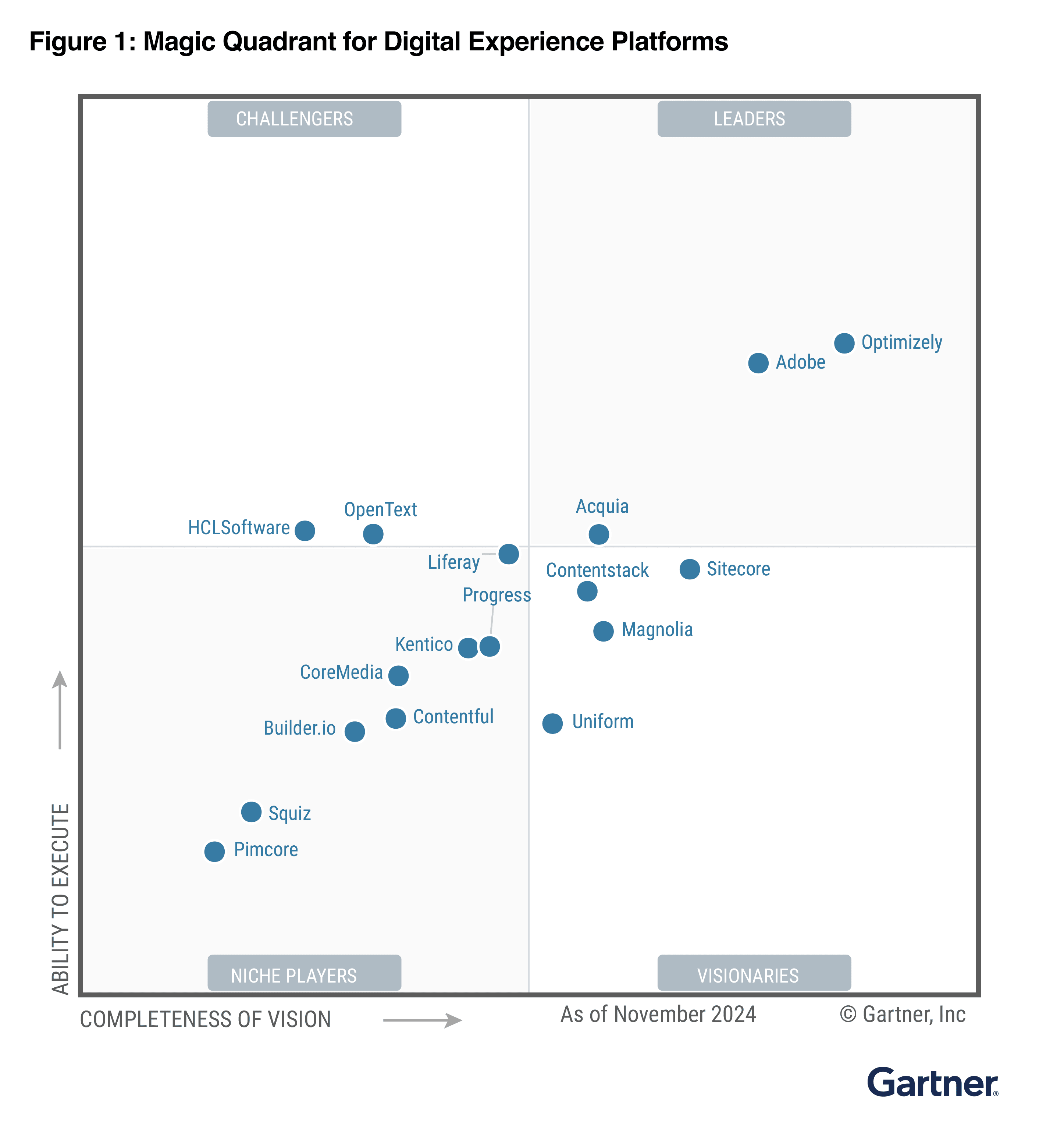
Uniform Recognized as a Visionary in 2025 Gartner® Magic Quadrant™ for Digital Experience Platforms
Download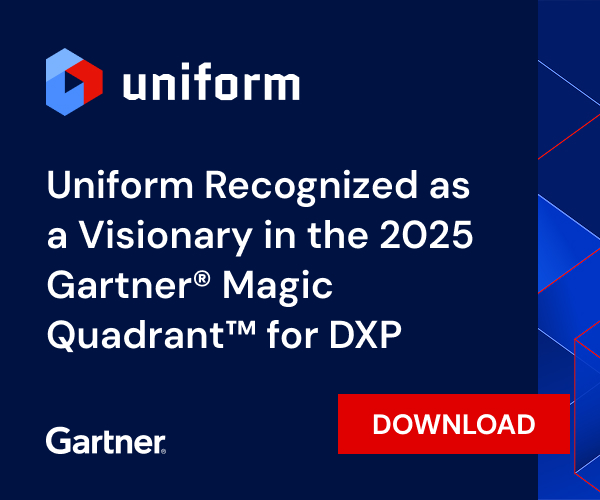

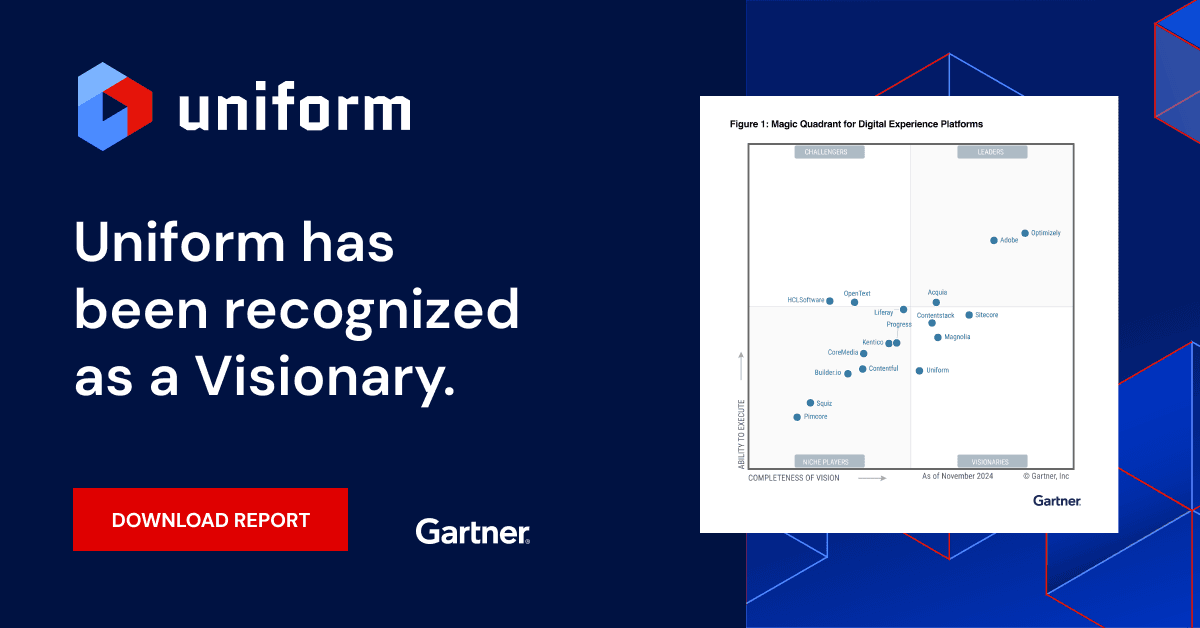
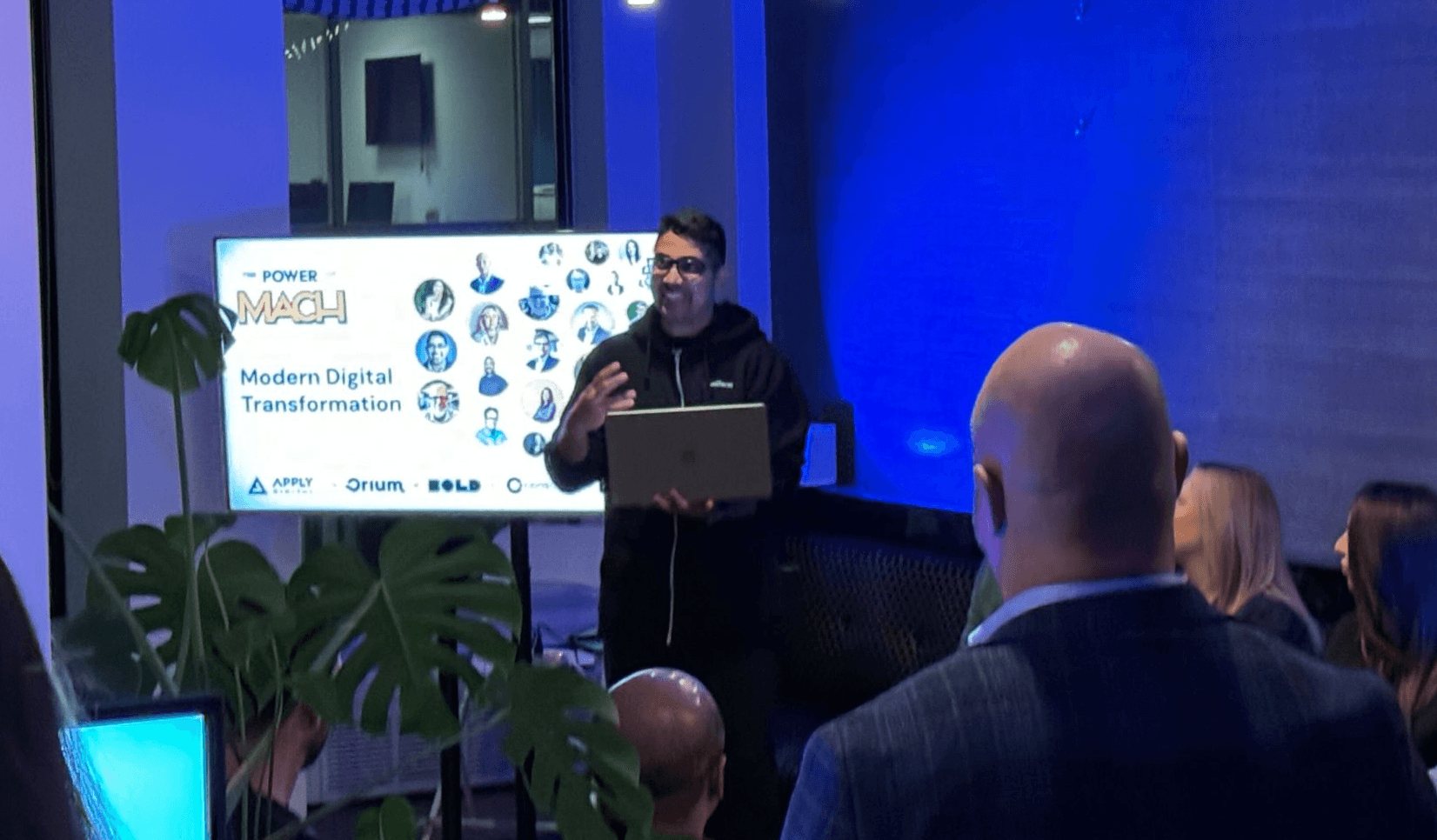

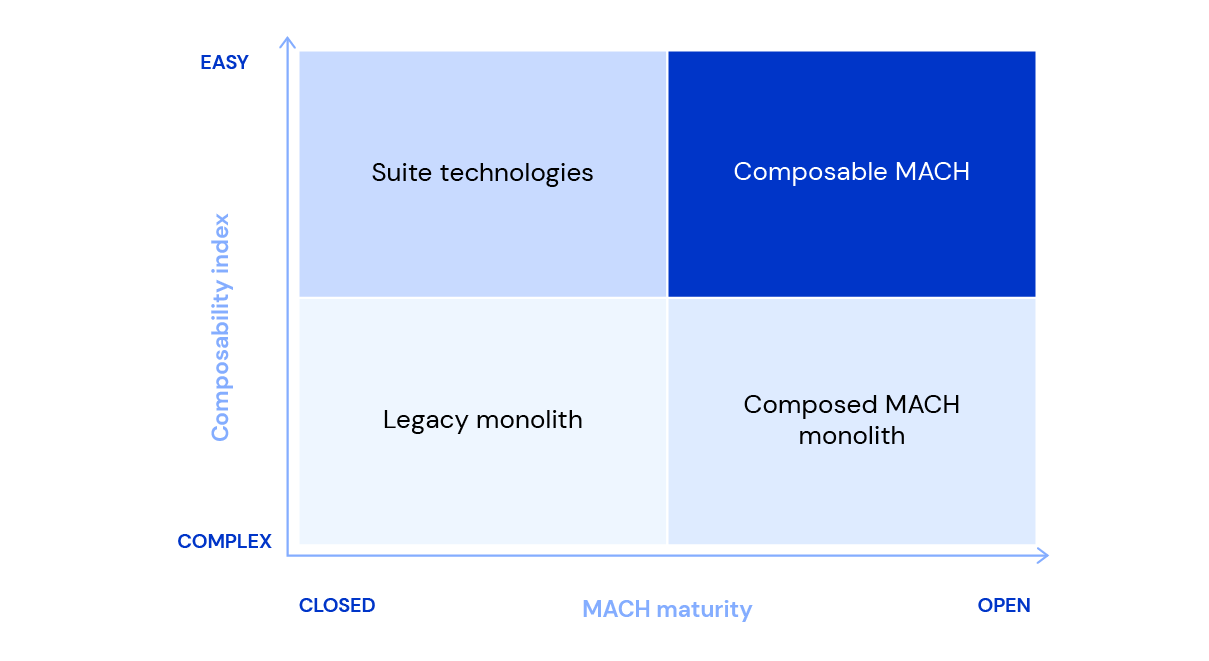
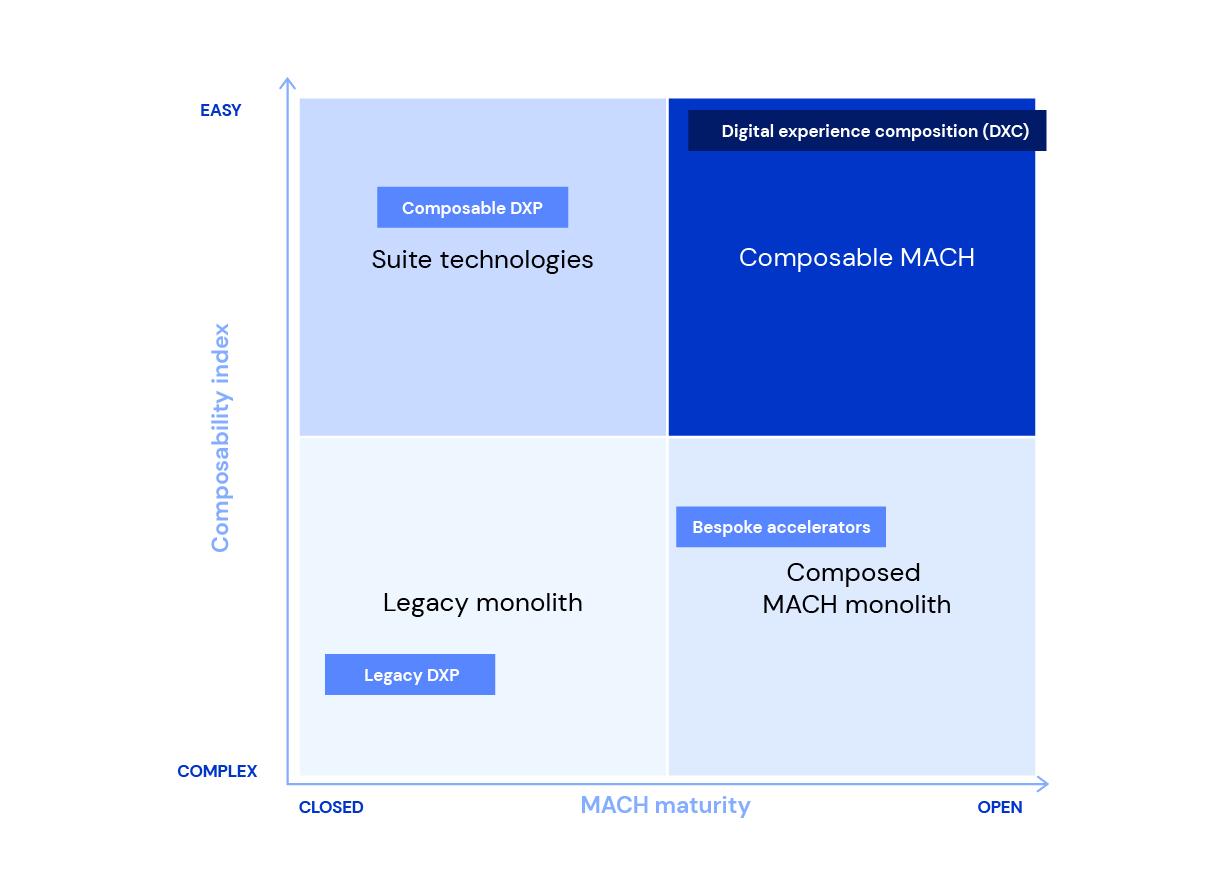
.png&w=1080&q=90)
.png&w=1080&q=90)
.png&w=1080&q=90)